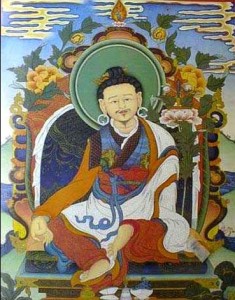The following is respectfully quoted from “Treasury of Precious Qualities” by Longchen Yeshe Dorje and Jigme Lingpa as translated by Padmakara Translation Group:
The characteristics of good disciples
By contrast, good disciples don the armor of devotion like Nagabodhi, who realized the Truth. They have steadfast minds and like Pelgyi Yeshe serve the teacher and the Doctrine without a care for life and limb. Like Jetsun Mila, they do whatever their teacher tells them, without regard for their own comfort. Disciples like this are liberated merely by their devotion.
Disciples should have faith, the source of all spiritual qualities, and a clear, lucid intelligence unafflicted by doubt. They should have acquired the knowledge that enables them to distinguish virtue from non-virtue. They should have the great compassion of Mahayana and a deep respect for vows and samayas. They should be serene and disciplined in thought, word, and deed. They should be broad-minded and on friendly terms with their neighborhood as well as with their Dharma kindred. They should act with generosity toward the pure fields and should have pure perception with a sense of propriety toward others.
Good disciples should be (1) like well-behaved children, knowing how to please their teacher and how to avoid displeasing him or her. (2) Even if their teacher scolds them severely and often, as need arises, the students should behave like intelligent horses and restrain their anger. (3) In order to accomplish their teacher’s purpose, disciples should be like boats, sailing back and forth without weariness. (4) Like a bridge, they should be able to withstand any circumstance–good or bad, happiness or suffering, praise or blame. (5) Disciples should be like servants, they should be obedient and meticulous in carrying out their teachers’ instructions. (7) They should be respectful toward their teachers and spiritual community, with the humility of a street sweeper. (8) They should reflect upon their own shortcomings and avoid all arrogance, like the old bull whose horns are broken and who takes the last place in the herd. In the Bodhisattva pitaka it is said that if disciples act in this way, they will be relying on their teacher correctly.
How to serve and follow the teacher
Spiritual teachers are embodiments of the Three Jewels; indeed, the Guru is the Fourth Jewel. As the Sarvabuddhasamaya-yoga-tantra says: “Buddha, Dharma, and Sangha: added to these, the teacher is the Fourth Jewel.” And Guru Rinpoche says, “The teacher is Buddha, the teacher is Dharma, the teacher is likewise Sangha. The peerless all-accomplisher, the teacher is the glorious heruka.” In view of this, there are said to be three ways of pleasing the teacher.
First, if one possesses material wealth, it is extremely important to make offerings. Second, in order to serve the teacher and to show respect, one should perform any necessary physical action, from house-hold chores and practical tasks of stitching and preparing a seat, to making gestures of reverence with your hands joined. One should speak up for whatever the teacher requires and, in relation with his or her teaching of the Dharma, one should do whatever is necessary, by way of explanation and so forth. The merit of all such actions is never wasted. These two kinds of action pleasing to the teacher–material offerings and physical and verbal service–are considered of the lowest and medium importance respectively. The third and best way of serving the teacher is to put the teachings into practice.
Spiritual masters have already accomplished their own aim. It is now their task to labor for the sake of others. It is important to understand that their various activities are displayed as appropriate to the inclinations and feelings of different beings and are the inconceivable operation of enlightened activities. Bearing this in mind, one should refrain from misinterpreting them. The siddhas of India like Saraha appeared for the most part as social outcasts. They adopted the way of life that was conventionally disreputable and lived without concern for purity or impurity, getting their livelihood as menials of the lowest caste or as “sinful” hunters and fishermen–living in the humblest way possible. But since their minds were undeluded, their actions were never wrong. We, by contrast, are as deluded as if we were under the power of hallucinogenic drugs. If we have not gained freedom through the three doors of perfect liberation, and have not realized the infinite purity of all phenomena, ascribe defects to our teacher, we commit an immeasurable fault. Bhikshu Sunakshatra committed to memory the entire twelve collections of the teachings, but, overpowered by his wrong views, he regarded as perfidious and underhand the actions of Buddha Shakyamuni himself, who was utterly without fault and possessed of every excellence. We should take all this to mind and confess and repair the slightest fluctuation in our faith. As it is said in the text, ‘khor lo chub pa rol pa:
If in the visions of your dreams,
The teacher seems to have fault,
As soon as you awake, confess!
For if you fail, the fault will grow
And lead to the Hell of Torment Unsurpassed.
If spiritual masters become apparently angry and scold their disciples, chiding them and behaving fiercely, the latter should understand that some fault has been perceived in them, a wrong thought perhaps, or negative behavior, and that the moment to practice discipline has come. They themselves vow never to commit the mistake again. They should never consider that the teacher is at fault. Intelligent disciples, who thus understand the underlying wisdom and purpose behind the master’s behavior, will not fall under the power of demonic forces.












Thank you. I would be good to head back in the direction of this Teaching!
Om Mani Pedme Hung !!!